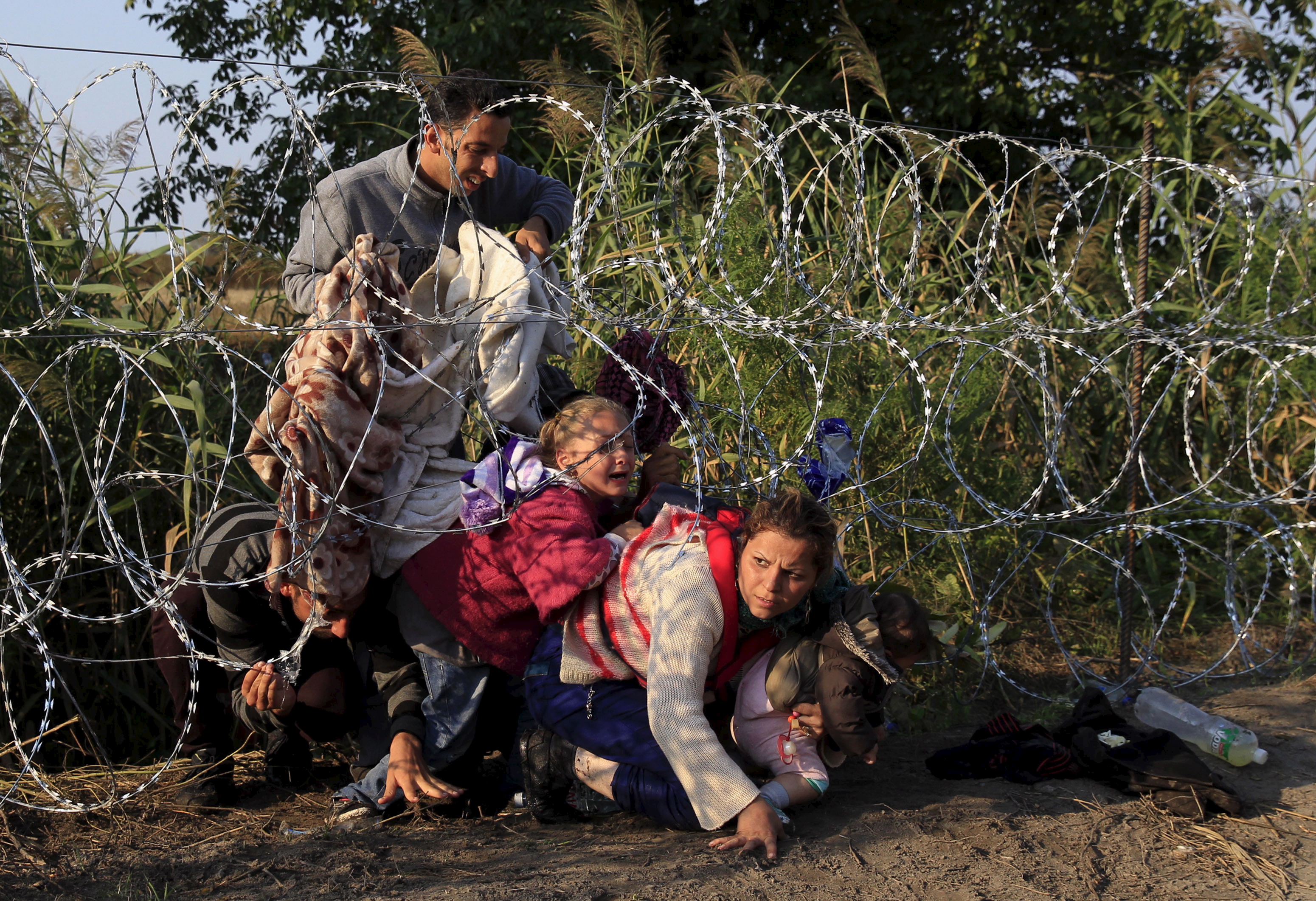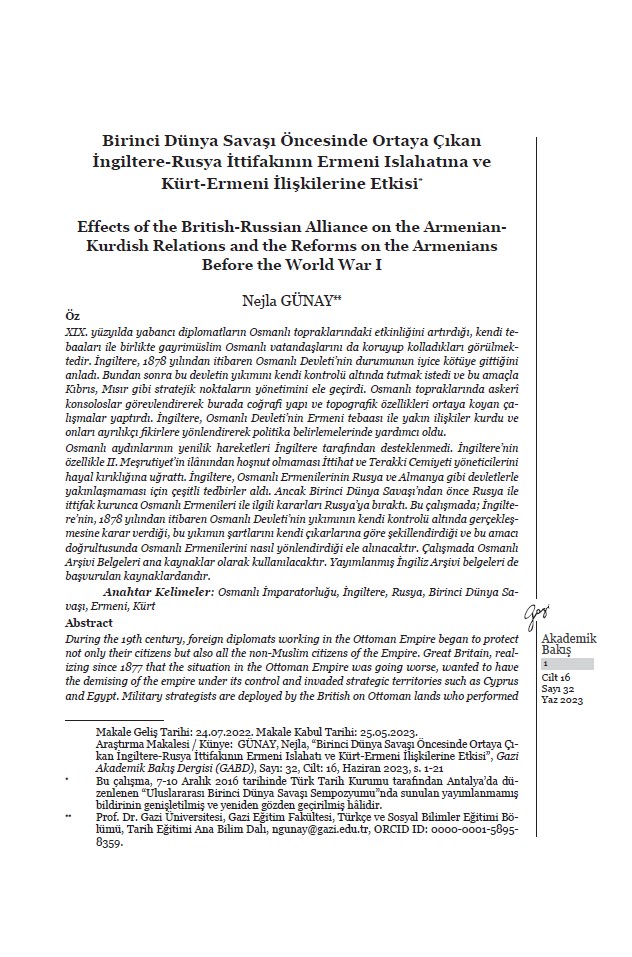
The aim of this paper is trying to evaluate the migration policy of the EU, which has been changing as a result of the developments in Syria. The reason for this change is closely related with the evaluation of security in which risk understanding turns into a threat perception. One of the reasons for the trigger of risk to threat understanding depends on the number of the migrants, which was an unexpected situation for the Europe. With the outbreak of the civil war in Syria in 2011, approximately one million people requested asylum to Europe.[i]
Number of migrants and refugees that crossed into Europe created the problem of how to deal with these people. The problem is not only about how to resettle them but also about how to deal with the security risks that have been carried into Europe by the refugees and migrants, which has the potential to turn into threat through the lenses of the EU countries. This understanding has two faces.
One face is about the perception about the strangers who fled into Europe in high numbers that are mostly Muslim lead to anxiety in EU countries not only at the level of the governments but also at the level of their populations. Even though in the first instance in some countries such as Germany, migrants were welcomed, it can be observed that after a while there occurred a dramatic change in the attitude of the Europeans towards the migrants. Examples of these situations were seen; in 2015 in Hungary with the kick of a journalist to the migrants who were trying to escape from the police blockade[iv], in Denmark with the acceptance of a law in 2016, the valuables of the migrants will be hold by the government under the justification that the expenses of the refugees will be met, in 2016 the declaration of Austria that a wire fence will be set up between the border of Austria and Hungary in order to prevent the flood of the migrants[v] or in 2017 putting rocks for the prevention of the stay of the migrants under the bridge, which is across La Chappelle refugee center in Paris.[vi]
Migrant and refugee crisis led to conflicts between EU countries, as well. For instance; in 2016 with the declaration of Austria, as they will accept, at the upper limit 37 thousand 500 refugees, resulted with the reaction of Germany. Germany underlined the need for acting together instead of taking decisions unilaterally.[vii] In September 2015, the relocation of the 160.000 refugees was discussed but not the desired decision could be taken.[viii] The disproportioned distribution of the migrants and refugees is still one of the basic problem areas between the EU countries.
This negative perception and attitude of the EU countries towards the migrants and refugees have another dimension that derives from the criminal cases that have been carried by the migrants and refugees. In 2016 by Germany, a report was prepared about the criminal cases that were made by the migrants and refugees, which elaborated that in the first three months of 2016, 69 thousand offenses were committed by the migrants and refugees.[ix] Hence, risk perception of the EU population towards the migrants and refugees as ‘strangers’ turn into danger perception in their homeland against their daily lives. However, this situation does not have a unilateral dimension. The living conditions of the migrants and refugees in EU countries, which is multiplied with the othering attitudes of the population and government policies result with the high level of alienation. For instance, the missing of the orphan migrant children and their kidnapping is one of the serious problems that the EU countries have to find a solution immediately. Moreover, the policy of making discrimination between the educated and the non-educated migrants also cultivate the mutual negativity. Therefore integration becomes difficult that end with a vicious cycle, which triggers the negative attitudes of the both sides towards each other.
The second face of the migrant crisis in EU depends on the existence of ISIS and its terrorist attacks in EU countries, which gains a different nature with the eruption of civil war in Syria. With the beginning of the civil war in Syria, ISIS gained more power and with the flood of the migrants into EU, ISIS gained more capability to carry out its terrorist attacks in EU countries. Another crucial point about this development depends on the evolution of the types of the terrorist events that have been carried by ISIS. ISIS led to a change in the understanding of traditional terrorism. This change depends on a strategy that is carried by psychologically. Hence, I would like to name this as “psychological war strategy”. This strategy aims the enduring shock and fear on people. By abusing these emotions, the creation of a persistent fear is aimed, which enhances the perception of the other as enemy. Therefore, othering towards the migrants and refugees is fostered.
For instance; in Paris attack, which was made simultaneously towards the Battaclan concert hall, regions of restaurants and the Stade de France in 2015, elaborates the psychological strategy of ISIS in an obvious way. After the attacks, people gathered together in order to commemorate the decedents and to show that they are not afraid from terrorism. However, as a result of the explosion of a street lamp, which led to the spread of a disinformation in the community about a terrorist attack happened, the response of the people resulted with an uncontrolled fear and panic. This behavior of the crowd implies how ISIS succeeded in creating an enduring fear that can be exploited easily.
Psychologically people generate two types of fear after a terrorist attack, which are controlled fear and uncontrolled fear. In controlled fear, the rationality can be preserved but in uncontrolled fear, panic shapes the behaviors and attitudes of the people. In Paris case, the terrorist attack of ISIS resulted with an enduring fear and panic on people. Therefore, ISIS continues its attacks in Europe through pursuing this psychological war strategy.
In 2014 in Belgium, terrorist attack in a Jewish museum by a gun through opening fire, in 2014 in France attack towards a police station through stabbing three police officers, in 2015 in Denmark, the terrorist attack that was made against a culture center and a synagogue by a gun, in 2016 in Belgium, suicide bombing to a metro station and an airport, in 2016 in Nice, the terrorist attack that was made by a truck towards the people on the streets, in Germany in 2016, the terrorist attack that was made by knife and axe on a train, are examples that indicate the psychological war strategy of ISIS, which aim the continuity of fear and panic on people. These examples of the terrorist attacks elaborate how ISIS tries to get the psychological supremacy. ISIS targets to exploit the uncertainty of terrorism through carrying out unexpected and untraditional attacks.
As a result of these unexpected attacks, which have been made by the migrants, refugees and the ones who have been living in Europe for a long time and even who become the citizens of that countries lead to a perception change towards the migrants in Europe. Hence, with the eruption of Syrian civil war, which resulted with an unexpected number of migrants that aim to reach European countries and with the effect of ISIS that are multiplied with a rising threat perception and othering attitude of the Europeans towards the migrants turned the European migration policy into a crisis. Collective mind towards the migrants in Europe is shaped through othering on the basis of security concerns, which construct the consciousness of people towards each other as us versus them that jeopardize living together.
*Merve Önenli is a PhD Candidate at The Department of Political Science and Public Administration at the Middle East Technical University.
[i] “The Syrian Refugee Crisis and its Repercussions fort the EU”, Syrian Refugees, September 2016, http://syrianrefugees.eu/
[ii] “Migrant Crisis: Migration to Europe Explained in Seven Charts”, BBC News, 04.03.2016, http://www.bbc.com/news/world-europe-34131911
[iii] “Migrant Crisis: Migration to Europe Explained in Seven Charts”, BBC News, 04.03.2016,http://www.bbc.com/news/world-europe-34131911
[iv] “Mültecilere Tekme Atan Kameramana Ödül”, BBC Türkçe, 18.10.2016, http://www.bbc.com/turkce/haberler-dunya-37689036
[v] “İki Avrupa Ülkesinin Sınırına Tel Çekiliyor”, Ajans Haber, 18.09.2016, http://www.ajanshaber.com/avrupa-careyi-tel-orgude-buldu-haberi/381840
[vi] “Paris’te Mültecilere Karşı Kaya”, Milliyet, 18.02.2017, http://www.milliyet.com.tr/paris-te-multecilere-karsi-kaya-dunya-2398478/
[vii] “Avusturya’dan Sığınmacılarla İlgili Önemli Karar”, Deutsche Welle, 20.01.2016, http://www.dw.com/tr/avusturyadan-s%C4%B1%C4%9F%C4%B1nmac%C4%B1larla-ilgili-%C3%B6nemli-karar/a-18994734
[viii] “Migrant Crisis: Migration to Europe Explained in Seven Charts”, BBC News, 04.03.2016, http://www.bbc.com/news/world-europe-34131911
[ix] “Emniyet Sığınmacıların Suç Raporunu Açıkladı”, Deutsche Welle, 08.06.2016, http://www.dw.com/tr/emniyet-s%C4%B1%C4%9F%C4%B1nmac%C4%B1lar%C4%B1n-su%C3%A7-raporunu-a%C3%A7%C4%B1klad%C4%B1/a-19313835
© 2009-2025 Avrasya İncelemeleri Merkezi (AVİM) Tüm Hakları Saklıdır
Henüz Yorum Yapılmamış.
-
 MAKALE DEĞERLENDİRMESİ: “BİRİNCİ DÜNYA SAVAŞI ÖNCESİNDE ORTAYA ÇIKAN İNGİLTERE-RUSYA İTTİFAKININ ERMENİ ISLAHATINA VE KÜRT-ERMENİ İLİŞKİLERİNE ETKİSİ” - 20.07.2023
MAKALE DEĞERLENDİRMESİ: “BİRİNCİ DÜNYA SAVAŞI ÖNCESİNDE ORTAYA ÇIKAN İNGİLTERE-RUSYA İTTİFAKININ ERMENİ ISLAHATINA VE KÜRT-ERMENİ İLİŞKİLERİNE ETKİSİ” - 20.07.2023
Tuğçe TECİMER 21.07.2023 -
MEETING OF ECO ( ECONOMIC COOPERATION ORGANIZATION ) COUNCIL OF MINISTERS
Numan HAZAR 01.12.2013 -
 G20 ZİRVESİ VE İLETTİĞİ MESAJ - 30.11.2022
G20 ZİRVESİ VE İLETTİĞİ MESAJ - 30.11.2022
Deniz ÜNVER 30.11.2022 -
 WHO IS BAKO SAHAKYAN? - MODERN DIPLOMACY - 24.03.2018
WHO IS BAKO SAHAKYAN? - MODERN DIPLOMACY - 24.03.2018
Dr. Javid VALIYEV 26.03.2018 -
 TARİHİN PRİZMASINDAN ERMENİ PALİNDROMLARI: TAŞNAKLARIN KENDİLERİNE SAHİP ARAMASI ÖRNEĞİ - 26.01.2024
TARİHİN PRİZMASINDAN ERMENİ PALİNDROMLARI: TAŞNAKLARIN KENDİLERİNE SAHİP ARAMASI ÖRNEĞİ - 26.01.2024
İlgar NİFTALİYEV 26.01.2024


